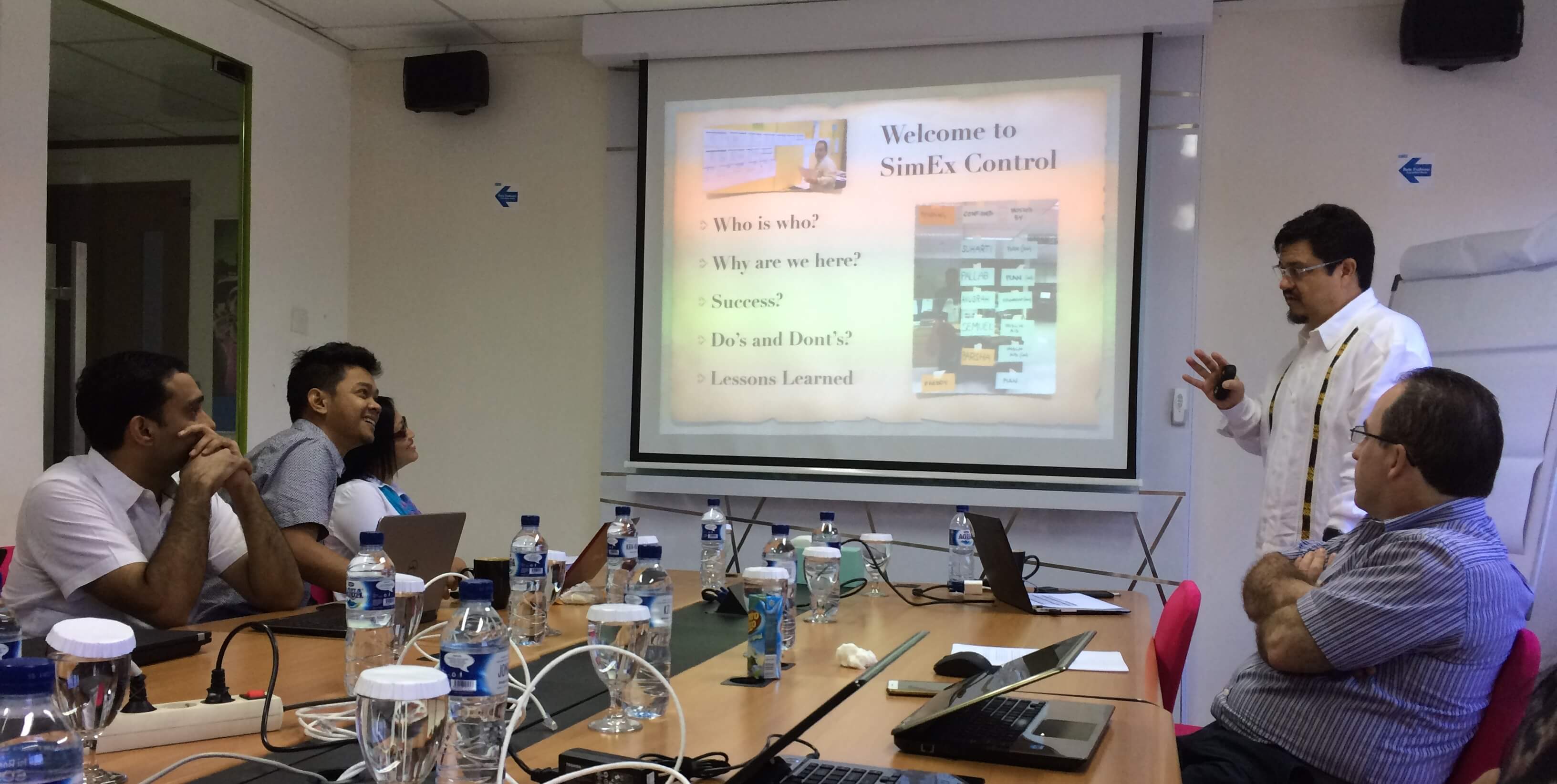Alexandra Pura from Christian Aid is the Philippines Platform Coordinator for the Transforming Surge Capacity project. Here Alexandra explains about a crisis simulation exercise that aimed to helped foster collaboration and the sharing of capacity across agencies.
On Sunday, 26th March, I flew to Jakarta from Manila as heavy rains battered the province of Hidalgo in Indonesia. By the time I arrived in Jakarta, a state of emergency was declared by President Joko Widodo as the relentless rain caused widespread flooding. Up to 61,000 people have been affected by devastating floods after the River Ufavu burst its banks in Polanco leaving 28 people dead. Approximately 19,800 people are staying in temporary evacuation centers such as schools and churches.
Stop right there. This is a simulation. And by the way Hidalgo does not exist.
The week-long simulation exercise was for Go Team Asia, a collaborative roster providing surge capacity to seven humanitarian INGOs (ActionAid, CARE, Christian Aid, Islamic Relief, Muslim Aid, Plan International and Save the Children) for disaster responses in ten countries in Asia. This innovative roster, set up by the Transforming Surge Capacity project, provides the opportunity to surge humanitarian responders across national and organisational boundaries to support relief efforts to affected communities.
The systems, processes and communication channels of the roster were put to the test during the exercise in Jakarta. Crucially, it also explored the level of collaboration between the different organisations and roster members involved in the response scenario.
I had previously participated in several emergency response simulations but it is usually single agency simulation – easy to manage. Go Team Asia’s simulation, developed in collaboration with the simulation experts Humanitarian Productions, was much more challenging because it entailed cross-agency, cross-country deployments. That means managing deployments across different organisational policies and structures, and coordinating with a large number of individuals across various countries.
When the roster members from Nepal, India and also from Indonesia started to arrive for the Hidalgo Flooding Response (complicated by ‘Ombla’ virus outbreak in the flooded areas), there’s a realization that this is actually happening! Roster members, together with their host organisations, worked tirelessly on consortium-led funding proposals, met with UN OCHA and government officials, and collaborated with the Indonesian Red Cross.
After three days of intense response work on the Hidalgo scenario, the debriefing captured the most important lessons not just on the Go Team Asia roster, but also on collaborative disaster response for Asia. One lesson around the nature of surge at the regional level was that it is highly contextualized. This means a much better understanding of disaster management and the humanitarian ecosystem in countries in Asia, and how it will impact on response modalities, is needed both for individual organisations and for consortia.
Tatang Husaini, Program Coordinator for Muslim Aid Indonesia, shared that “before the simulation, we [Muslim Aid] were discussing that if the Hidalgo flooding really happened and a monitoring, evaluation and accountability specialist will be deployed to us, it will be beneficial to us. Because honestly, we are weak in MEAL. When the simulation was on-going, Semy [the roster member] was really helpful. It was really a sharing of capacity.”
Wahyu Kuncoro from Plan International noted: “We have to implement action points from our disaster preparedness plan, e.g. selecting a travel agency that provides a 24-hour service. We do not have this yet. When requests came during the weekend or at night, the travel agency cannot respond so this contributed to delays.”
“The exercise is wonderful”, shared Barsha Chakraborty, a roster member from ActionAid. “The lesson I got from the simulation is that it is not only about an individual’s response to a disaster situation but it is an organizational decision. If the organization does not take this seriously, then it is going to be difficult for the roster member.” According to Anugrah Abraham, who deployed from Change Alliance India to the exercise, the learning was all about learning to work in different contexts: “In an unfamiliar setting, how do we pick up the scent of the tiger or estimate the speed of the oncoming traffic? We need to leverage the eyes and ears of people who know and understand the local dynamics.”
Next month, the regional partners of the Transforming Surge Capacity project will be coming together to reflect on the simulation results. The identified lessons will be an important stepping stone for the future of Go Team Asia, and the future of collaborative civil society surge in Asia.
I left Jakarta tired after an intense week but my brain was super-charged with lots of learning from the regional simulation. I am so looking forward to the simulation exercise in the Philippines happening this April.
Read more about Go Team Asia.
Read more about the Transforming Surge Capacity project, part of the Disasters and Emergencies Preparedness Programme, funded by UK aid.

